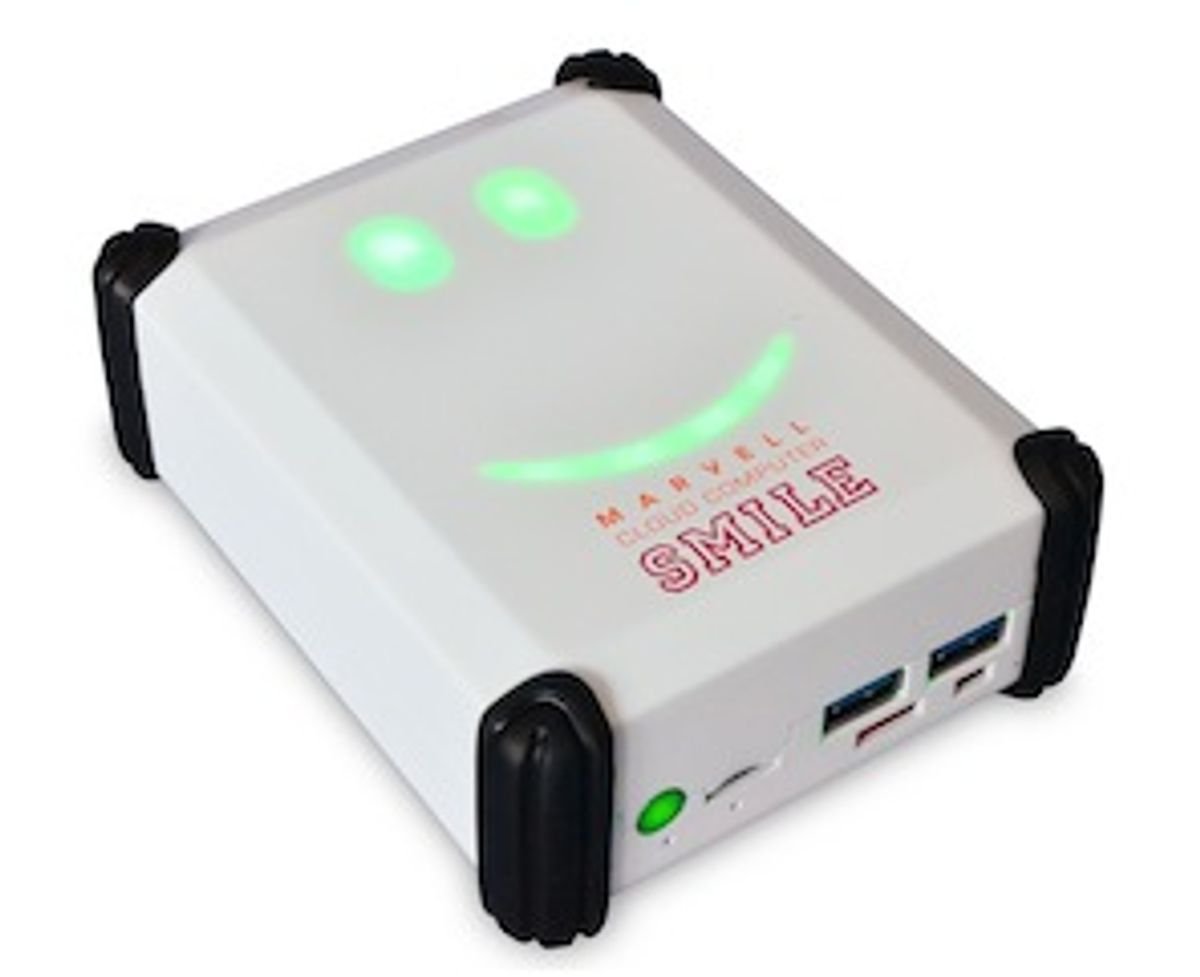But earlier this week, researchers from Stanford University and Marvell Semiconductor Inc. dared to upset the conventional wisdom. They introduced a micro-cloud computer, the Smile Plug, and educational software, which they call Smile (for Stanford Mobile Inquiry-based Learning Environment, an approach already tested in 22 countries).
The demonstration was meant to show off a new, inquiry-based, platform for learning that teaches students to question instead of learn by rote. And yeah, that’s a good thing, and the software seemed fine, if not exactly a killer app. Alternative software systems are likely to be developed through the open-source Smile Consortium. And some ideas may come out of a free online course just launched by Stanford, “Designing a New Learning Environment,” that will cover this project as part of its curriculum.
The accompanying cloud computer—the Smile Plug—will be shipping in October. Priced under US $30, it doesn’t require Internet access: It can be connected to hard drives and other peripherals that can store textbooks or quizzes to be distributed to the students. It runs Linux on a Marvell Armada 370 system-on-a-chip, contains a Marvell Avastar Wi-Fi chip, and plugs directly into a wall socket, though it can also run from a battery. Its Wi-Fi chip supports up to 60 devices connected at a time. Marvell intends the Smile Plug to be easy for teachers to manage. Like the software, the Smile Plug isn’t a slam dunk; it may or may not catch on. It definitely has cheap and cute on its side.
But enough about the hardware and software. What was really revolutionary about this demonstration was the mindset of the researchers involved. Because they are not assuming that they’ll need to fund iPads for every student in the U.S. or built under-$100 laptops for students in the developing world. They’re assuming instead that most students carry, or at least have access to, a phone that's powerful enough to do any computing needed in the classroom. So the only hardware that’ll have to be purchased is a cheap server that connects these devices.
I think they’ve hit on something here. Because indeed, a lot of kids do carry smartphones, and, for the ones that don’t, “obsolete” smartphones are increasingly available (you may have a couple in a drawer somewhere). They don’t require a cellular plan to operate in Wi-Fi mode.
I do think this announcement does represent a paradigm shift, and in a few years, teachers will be telling students “please take out your phones” instead of “put those phones away.”
Follow me on Twitter @TeklaPerry.
Tekla S. Perry is a senior editor at IEEE Spectrum. Based in Palo Alto, Calif., she's been covering the people, companies, and technology that make Silicon Valley a special place for more than 40 years. An IEEE member, she holds a bachelor's degree in journalism from Michigan State University.




